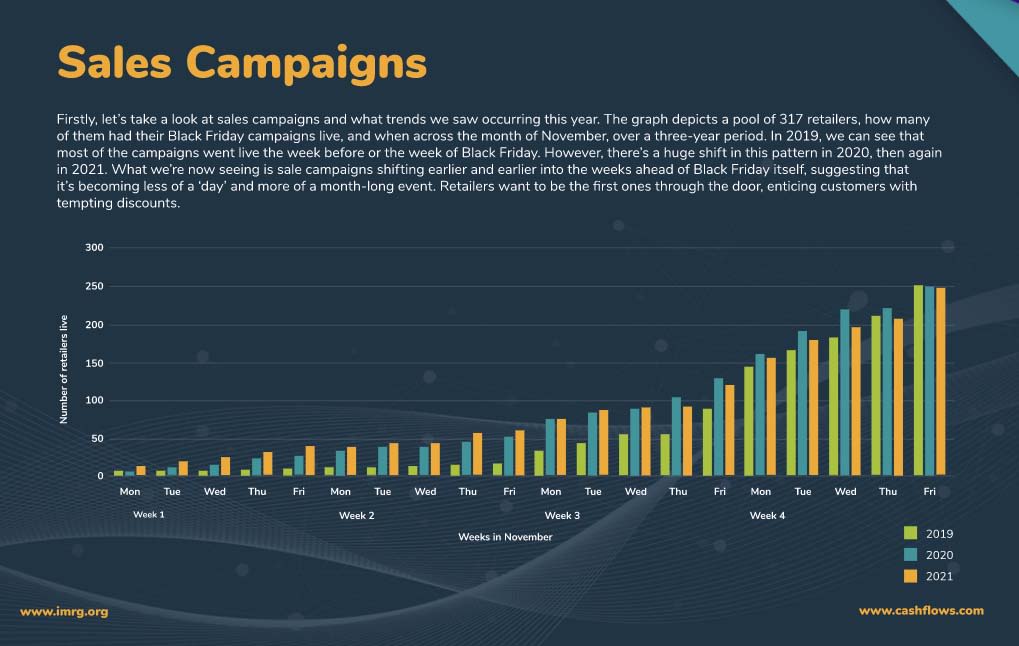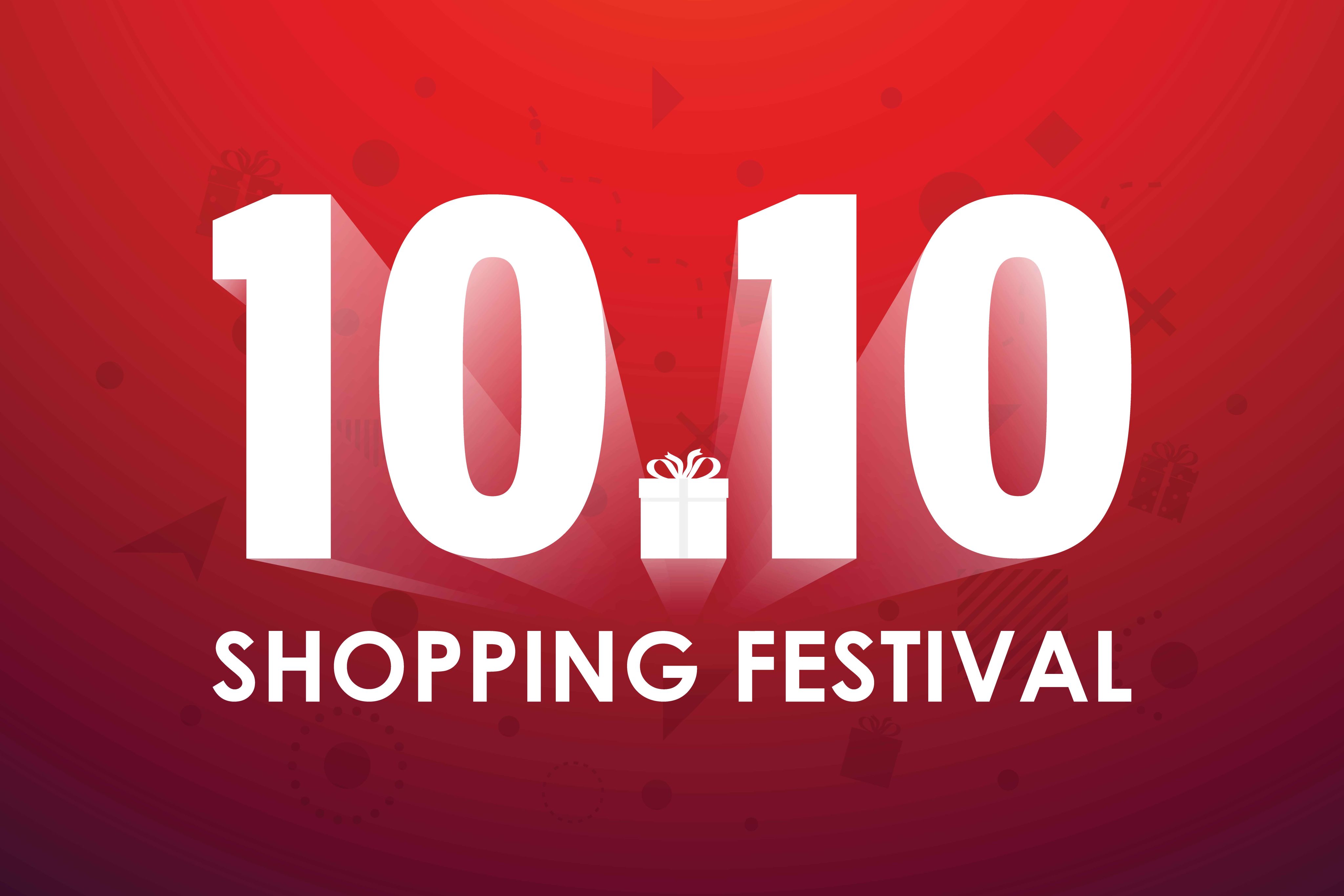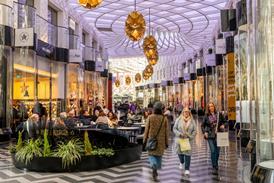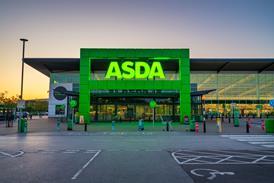The Mega Sale days turning Christmas on its head

Introduction
The Christmas shopping period – historically heavily weighted towards the first three-and-a-half weeks of December following the traditional end-of-November pay day – is now effectively a multi-month affair.
The rise of Mega Sale Days (MSD) such as Black Friday and Cyber Weekend, which kick-off annually on the fourth Friday of November, and the Alibaba-led Singles’ Day – or 11:11 Festival – on November 11 have spread festive Sales out over a greater number of weeks.
And in the past two years, a US-led counter event to Alibaba’s festival, called 10:10 – held one month before Singles’ Day on October 10 – has also vied for consumers' attention.
Conceived by Coresight Research in June 2020, the event launched with more than 100 participating retailers that October. This event offers customers deals from participating retailers, encourages brands to use new technology such as live streaming to sell to their audience and donates to charity each time a purchase is made.
The impact on wider retail is yet to be felt, but if this new event gains momentum in the UK it could further cement October into the foundations of golden quarter spending patterns.
If 10:10 gains momentum in the UK it could further cement October into the foundations of golden quarter spending patterns
The cost-of-living crisis could accelerate the shift towards customers shopping on discount and promotion-led MSDs this golden quarter, while the later-than-usual FIFA World Cup, which runs from November 21 until December 18, could all impact trading patterns.
So what does this mean for trading this golden quarter? How can retailers plan for a festive season containing more curveballs than ever before? And which retailers are best placed to capitalise on the opportunities presented by this unique set of events?

Mega Sale days: The gift that keeps on giving

The fourth quarter of the year has always been the most lucrative for the lion’s share of retailers, but its shape and the opportunities it presents are changing almost constantly.
Data from the BRC and KPMG shows that retail sales in October have grown every year since 2017 and the presence of Mega Sale day (MSD) events is part of the reason for this sales growth earlier in peak. Black Friday has become such an established event on the calendar that retailers are building their campaigns a month ahead of it, so October has become a bigger month for spending.
Data from etail trade body IMRG on online sales paints the picture more clearly. Since 2019, Black Friday promotions, which often entice customers to bring forward their Christmas shopping, have been arriving earlier each year – some retailers now even refer to their discounting extravaganzas as Black November.
Andy Mulcahy, strategy and insight director at IMRG, says: “Our stats show November has pulled forward a lot of sales volume from December – that’s clear if you compare now to seven or eight years ago.
“December online sales used to go up compared with November, but now they go down. Black Friday has elongated the traditional festive sales period – and it can be frustrating for retailers who [then] need to put so much energy into discounting in the lead-up to Christmas – but it’s well and truly ingrained in the public consciousness now.”

November gain?
Special offers dominate Singles’ Day and Black Friday, forcing retailers to consider their promotional strategies at a time of year when they could previously sell confidently at full price. It's a switch that clearly favours the consumer, with retailers often giving up margins at a crucial time of year in a bid to secure spend and keep pace with competitors.
It is a “delicate balance” for retailers to get MSD event buying and merchandising right, according to Mulcahy. Too much stock provides an end-of-year hangover, while too little has the potential to disappoint customers chasing a bargain.
Mulcahy suggests instead that planning for events like Black Friday needs to be part of the annual retail strategy.
“Can retailers get customers to buy again and at more of a full price? If so, then Black Friday becomes a success, assuming they take the longer view”
“The success of Black Friday is the big numbers, despite retailers likely losing margin through discounting. But if they look at it as part of the year’s strategy, that’s where real gains can be seen,” he says.
“You may be able to acquire loads of customers and swell the database, but it’s the follow-up activity that is crucial. Can retailers get them to buy again and at more of a full price? If so, then Black Friday becomes a success, assuming they take the longer view.
“It is the biggest opportunity when the shopper base is most active, engaged and ready to buy, so it’s only natural retailers are looking to take advantage of that.”
Mulcahy also suggests that with Singles’ Day positioned so close to Black Friday – and Black Friday now stretching throughout November – these two events now form part of the same discounting plan for many UK retailers.
Singles’ Day, or 11.11, is more for retailers who are looking to enter or grow in the Chinese market. For those businesses, it will mean participating in an event at a time when historically all eyes within the business were on December 25 and getting ready for Christmas.
The figures suggest November 11 is difficult to ignore for businesses that are targeting China, though. Alibaba's 13th annual 11.11 Global Shopping Festival in 2021 generated RMB540.3bn (£69bn) in gross merchandise volume over the course of just 11 days. Growth may have slowed versus previous years, but it still stands as the biggest MSD event on the global retail calendar.
A host of Western businesses, including Britain's Burberry, The Body Shop and Whittard of Chelsea, sell through Alibaba via its Tmall Global marketplace. Alibaba said more than 1.3 million new products were offered by 29,000 overseas brands via this route on Singles’ Day last year, buoyed by the addition of 2,800 new international brands joining the event for the first time.


New MSDs
A movement in the US dubbed the 10:10 Shopping Festival could firmly establish the extension of peak trading into early October, at least in the Western world.
The 10:10 event – a partnership between research house Coresight Research, retailers, tech companies and other industry bodies – is distinguishing itself as an MSD by ensuring every purchase made provides an opportunity to donate to a participating charity.
In 2021, its second year, 10.10 featured shoppable livestreams from more than 20 retailers as well as special deals, exclusive items and promotions. Guess and Macy’s were among the biggest retailers and brands taking part. In 2021, Coresight partnered with livestream shopping platforms Smartzer and CommentSold, as well as live, one-to-one selling platform Ghost Retail, to provide a platform for brands and retailers to showcase and sell their wares.
Coresight Research positioned the 2021 event as the kick-off to the holiday shopping season. The “live-selling approach drove its success”, according to the research house, which said key themes centred on “innovation, fun and promotions”. While nowhere near as big as 11:11 yet, 10:10 has the potential to be a significant event.
The live-selling approach of 10:10 reflects the model of selling in China, where brands livestreaming online from warehouses or special events are an established part of the Singles’ Day brand-to-consumer communication.
A moving feast
Christmas in July is a concept retailers have supported for several years now.
Indeed, PR services provider CIJ Group previously ran an event of that name for brands to talk to the media about festive ranges and their golden quarter focus areas well in advance. However, the supply chain disruption sparked by the coronavirus crisis has made July preparation difficult.
“Whereas before planning and products would be ready six to eight months in advance, a lot of activity is happening closer to the events themselves now”
As a result, the Christmas in July Festival has now been replaced by The Big Christmas Press Show in September.
“The readiness of retailers is now much closer to the actual event,” CIJ Group founder Courtney Rogers explains. “Whereas before planning and products would be ready six to eight months in advance, so many challenges – supply chain issues, Brexit, availability of natural resources – mean it is not feasible to have product imagery, samples and knowledge of stock so much in advance.
“Across all communications, a lot of activity is happening much closer to the events themselves now.”
However, while the end product and communications may not be ready until closer to peak, that doesn’t detract from the fact that preparations are already well under way to meet those deadlines.
Winning during peak: Where to invest and why

MSDs are not for every retailer. Last year a number of retailers opted out of the sales bonanza, including B&M, which also didn't take part in the MSD the year before; Home Bargains; M&S, which typically doesn't take part; Primark; Poundland; and TK Maxx. High street giants such as Next do not participate every year.
However, in 2022, with the British Chamber of Commerce expecting inflation to rise above 10% in the final quarter, there may be more reason than ever for retailers to build campaigns around discount-driven days.
“In sectors where there is still price elasticity, retailers with the better forecasting and pricing algorithms and greater tech investment will have the edge”
Consumers will be looking for bargains in a tough economic climate, but Daniel Lucht, research director at retail analyst group ResearchFarm, says: “This backdrop has definitely made it much harder for retailers to plan for Sales events and, in sectors where there is still price elasticity, the retailers with the better forecasting and pricing algorithms and greater tech investment will have the edge.”
However, he adds: “If a retailer’s planning and buying has been suboptimal and there is too much stock in the system, then a Sales event makes eminent sense, too.”
Physical–digital balance
Retailers regularly highlight the importance of offering customers a consistent experience across all the channels on which they operate, yet Singles’ Day and Cyber Weekend – by their very nature and origin – are events for the digital shopper. And Black Friday, which started as a post-Thanksgiving Christmas shopping kick-off event in the mid-20th century, has morphed into a predominantly online affair.
Department store chain John Lewis said it sold 286 items every minute online between 9am and 10am on Black Friday 2021, while Currys’ online sales reached 56 purchases every minute between Thursday November 25 and Black Friday morning. More than half a million orders were taken on Boots.com over the four-day Black Friday weekend, too.
These figures suggest that much of the planning around MSDs needs to be digitally focused, with these companies joining hundreds of other UK retailers in ramping up email and social media marketing activity in the build-up to Sales events.
John Lewis already has a landing page for Black Friday 2022 in place, which at present directs visitors to current special offers.

Crossing the channels
Edu Garay, senior client director at Kantar, says MSDs present an opportunity to try out emerging social channels. He says that YouTube, TikTok, livestreaming, podcasts, influencer content and social media stories are all on the rise in terms of their deployment in marketing – much of it in the test phase.
Livestreaming platforms starting to rise to prominence in UK retail include Go Instore, which is used by Marks & Spencer, and Bambuser, which has been trialled by Ted Baker. Fashion brand ISawItFirst is working with a company called OOOOO – so-called because the business says it is the noise people make when they buy something they love.
But retailers should not just use new social channels “for the sake of it”, says Garay. “It needs to be meaningful and authentic to the brand, and relevant to their audience,” he explains.
Garay says the best marketing campaigns during peak periods are those built up across multiple channels, adding: “We believe consistent and integrated campaigns and communications are vital for brands to grow.”
“The advertising environment is busy right now. You need to come up with a strong creative idea that builds a lasting impression, but the brand needs to shine through and be integrated in the messaging”
He advises marketing around MSD events during peak if retailers’ budgets permit it, but suggests the key to success in the golden quarter is designing compelling creative copy or video and ensuring the brand profile is elevated.
“The advertising environment is busy right now. You need to come up with a strong creative idea that builds a lasting impression, but the brand needs to shine through and be integrated in the messaging – otherwise, your money will not be well spent.”
With Singles’ Day in China and 10:10 in the US both building their Sale events around livestreaming, Mac and L'Oréal have cited livestreaming as a key sales channel going forward. Walmart has begun a livestreaming pilot with TikTok in the US, while UK retailers such as ISawItFirst, The Fragrance Shop and Ted Baker are all trialling their own live shopping experiences. And, of course, Currys was ahead of the curve, launching its ShopLive offer during June 2020 with great success.
CIJ Group’s Rogers says: “China is around six to eight years ahead of us in terms of what they are doing in retail – what tends to happen is things going on there trickle down to the West.
“Continuing from how influencers are selling, I think we’re going to see a big surge in livestream shopping platforms for retailers during peak and outside of the golden quarter. Some companies have launched it – at the moment they’re not huge, but it’s definitely something that will grow significantly in the future.”
Earlier peak means earlier preparation is required, according to Majestic Wine, whose chief executive John Colley talks up the importance of getting all teams working in harmony for peak.
“At Majestic, we began holding cross-departmental meetings on peak planning from spring onwards,” he says.
”Open communication, key understanding of responsibilities and supporting one another to achieve our aims are all vital – and you can’t be too early on this approach. That’s the same for internal and external stakeholders.”

Kicking off a unique peak?
The shape of golden-quarter trading continues to evolve and 2022 presents another tactical dilemma for retailers: the unique matter of a winter football World Cup kicking off in late November.
World Cups are known to ramp up consumer spend in certain categories, particularly around food, drink and in-home technology such as TVs. But the impact that the sporting showpiece will have on purchasing behaviour during the golden quarter is an unknown entity.
Black Friday coincides with England’s second group match of the tournament, against the US, and previous World Cup viewing figures suggest it will attract tens of millions of people to their TV sets for a good part of the day. However, peak Black Friday shopping is typically in the morning, while the England match will kickoff at 7pm.
“We’re expecting this to disrupt the usual shopping behaviour throughout the golden quarter, with an increased demand for game-night snacks, party-food lines, beers, wines and spirits, and sharing meals“
On the unusual World Cup scheduling, Co-op Food head of product development and innovation Michelle Rowley says: “We’re expecting this to disrupt the usual shopping behaviour throughout the golden quarter, with an increased demand for game-night snacks, party-food lines, beers, wines and spirits, and sharing meals, purchased both in our stores and through our convenience online platforms.”
Richard Lim, chief executive of Retail Economics, expects that retailers will be “making the most” of the new shopping opportunity, but he also predicts they may look to get their marketing activity out before the next planned rise in the energy price cap, in October, “to try to grab the discretionary spend before people feel the effects”.
- Want to find out more about the impact of the World Cup? Watch out for Retail Week's full analysis of the effects on peak trading, which will be published on July 25

The MSD champions

Amazon emerged as the most popular UK retail website during the four days around Black Friday 2021, racking up more than 61 million hits, according to online analytics company SimilarWeb.
Although down 18% on the previous year – against tough comparables sparked by social distancing restrictions – it nevertheless highlights a vast interest from deal-seeking consumers at this time of year.
Black Friday behemoth
Amazon said more than half of its global sales between Black Friday and Cyber Monday in 2021 were from independent selling partners, most of which are small and medium-sized businesses (SMB). By creating momentum behind its SMB community, Amazon was able to draw in interest from a wide variety of customers shopping across an array of categories.
Its bestselling products included own-brand items such as the Fire TV Stick and Echo Dot.
Amazon encouraged continued spending beyond Black Friday last year by offering daily deals throughout the festive season, including on items suitable for gifting.
It also built momentum around its Black Friday deals by running ‘Black Friday Live’ in Central London – four days of free events including appearances from musicians Alexandra Burke, Ray BLK and Reggie Yates.
According to SimilarWeb data, fellow marketplace eBay was the second most popular site during last year's Black Friday weekend with just under 36 million hits, followed by Argos in third and Currys in fourth. This quartet have taken the top four spots for two years in a row.
The success of these particular retailers highlights how, despite Black Friday becoming a sales event for multiple sectors in recent years, the tech discounting activity it was built on is still a significant draw. The marketplace model resonates with shoppers seeking a bargain, too.
Retail websites in general are in demand over the Black Friday period, with retailers, that do not take part in Black Friday still registering high traffic.
However, it will be brands owning and carving out their own distinct messages during MSDs that have a chance to capture customers for the long term.
Black Friday in everything but name
Hotel Chocolat’s marketing activity around Black Friday 2021 was dressed up as a “Christmas shopping event”, with customers spending £25 or more entitled to a 15% discount to support them with their early Christmas gift shopping.
Instead of piling the promotion into one day, it ran for a full week until December 1 and was marketed to newsletter subscribers before anyone else as a way of rewarding loyal and engaged customers.
Such tactics are seemingly working. Hotel Chocolat's group revenue during the 13-week period to 26 December 2021 surged 37% year-on-year and 63% against 2019 levels.
Livestreaming sales boost
Overseas companies are tapping into the vast potential of Singles’ Day in China – and fashion designer Diane von Furstenberg (DVF) is an example of a Western business that achieved success last year, according to Alibaba.
It boosted sales utilising Alibaba’s livestreaming platform to sell goods to Chinese-based consumers, with DVF chief executive and president Gabby Hirata joined by model, socialite and the company founder’s granddaughter Talita von Furstenberg, on a 11:11 festival live shopping broadcast from New York.
Company sales in the first 10 minutes of the broadcast usurped sales figures generated in the first hour of the previous year’s Singles’ Day show, highlighting the power of product, the introduction of a famous face to model it and the growing power of technology in driving revenue at this time of year.
Not just about price
Majestic Wine boss Colley says the wine retailer’s Black Friday approach “is to really focus on those customer missions and mindsets”.
“That's the same for any trading period, but is acutely important for the vital run-up to Christmas,” he explains.
“Black Friday is our opportunity to really flex the muscles of Majestic – to showcase the ranges our award-winning buyers have brought in and create a compelling offer that you won't find elsewhere. It's not just about price – but about broadening consumers' horizons too and kicking off the festive season in style."
In practice, this involved individual Majestic shops engaging with their respective communities via a flurry of activity and promotional marketing on branch-specific social media websites. There were also tastings in some of the retailer's big city stores such as Brighton.
One deal some stores ran last year was a Cyber Monday champagne offer, with Majestic marketing discounted bottles as early as October and running the campaign until Cyber Monday in an effort to get consumers to bring forward their Christmas bubbly purchases.
Deals, customer events and free tastings are being mooted for peak period 2022, with Colley suggesting that after two turbulent years it is “really important that we put our best foot forward to push the boat out for our customers”.
Retail theatre
Bookseller Blackwell’s Black Friday campaign for the past three years has involved selling 12 books – one an hour – with circa 70% markdown. Some 250 copies of each title were up for grabs, so 3,000 SKUs in total each year, and the ecommerce event has driven online and social media traffic, according to Blackwell’s digital director Kieron Smith.
It will run again this year, he reveals. “We wanted to do something fun that said actually bookselling could join in with Black Friday,” Smith explains.
“Part of the reason for doing an event like this is so that we don’t change the shape of our peak-period trading. People aren’t going to delay their purchases for this event because it’s really random – all a bit of fun and it’s all about retail theatre.”
Smith says that customers involved would post pictures of the books they procured on social media, adding that the event creates “a positive halo effect” with people coming to the site, browsing, and looking and buying other books while waiting for the next deal.
Most of the books sold out last year, Smith says, and Blackwell’s record for the event is a promoted book selling out in six minutes.
“That all helps build up the excitement,” notes Smith. “Retail should be fun, exciting and engaging – and I don’t think the industry does this sort of thing enough.”
Balance MSD strategy against values
With a significant consumer mindset shift towards environmental concerns, pre-loved operators could be set to benefit.
Google previously reported that search interest in ‘Depop Black Friday’ – a selling platform focused on preloved fashion – was markedly up (70% year on year) in 2020.
In a survey it ran in the summer of 2020, 55% of shoppers claimed sustainability was more important than value and quality.
However, encouraging even greater consumption may not sit right with the values of certain retailers' audiences.
As a result, some retailers have pushed back against Black Friday in particular. Sofology pushed ‘Green Friday’ – ditching special offers in favour of “better deals for the planet“, for example.
Ikea did not offer customers Black Friday discounts but did award customers with an extra saving when they used its buyback and resell scheme. Sustainable sneaker brand Allbirds also does not partake in the Black Friday Sale, but instead releases exclusive products, such as the Runner-Up Mizzle Fluff trainers.
Patagonia's anti-Black Friday 2020 advertising statement was 'Buy less, demand more', which was a circular economy initiative to incorporate its used clothing programme Worn Wear. The initiative meant customers shopping online and looking at products would see a button recommending refurbished alternatives.
Often the narrative around the evolving structure of peak is painted in a negative light – centred on whether retailers can cope with the change or if Black Friday is cannibalising Christmas sales – but the above examples show MSDs present opportunities.
And CIJ Group’s Rogers suggests that an elongated peak period gives retailers a chance to better tailor messaging to different demographics, rather than rolling out homogenous messages in December.
“There are many elements that need to be factored in for a successful peak, but from a PR and marketing perspective an elongated peak means retailers and brands can target different customer profiles,” she argues.
“Be it the early adopters who plan their presents in September, through to the last-minute present-buyers. Lots of our customers, like Hobbycraft, Notonthehighstreet and Wayfair, use all the rich data from their websites to optimise their success in Q4.”
Whether it is monitoring trends or analysing search behaviour, these companies are examples of retailers using the longer peak period to target individual customer groups with specific campaigns at the right time, explains Rogers.
There is no template for retailers looking to make the most of a new type of peak trading period, punctuated by MSD events.
But events like Black Friday and Singles’ Day, which now pepper the golden quarter, cannot be ignored – they are multi-billion-pound revenue drivers for the wider industry. With that in mind, it is important to factor them into the annual strategy, rather than simply working them into the plan as they approach.
Whether a retailer or brand goes big or small for these events, or does not participate at all, the fact is consumers are willing to spend heavily during these so-called discounting festivals. Such a high level of public interest needs to be factored into retailers’ assessment of consumer sentiment throughout peak.
Agile thinking required
Flexibility and the ability to shape a proposition to meet new and emerging trends or the general global climate have always been key distinguishing factors in separating the best from the rest in retail. The Covid-19 crisis underlined this further, often quite brutally, with businesses such as Debenhams and Topshop – which were unable to evolve with the times – collapsing during the pandemic.
And as a period of unpredictability continues in 2022, the retailers that are best-placed to capitalise on the peak period will have planned for the new and emerging macro factors associated with that time of year, while also being prepared to change their plans if required.
The World Cup is a good case in point here. England making a dash for the latter stages would occupy consumers’ time and attention at what is generally a busy time for retail, so what products and offers might trigger them to keep purchasing, for example?
Likewise, supply chain chaos is still disrupting buying and merchandising cycles, so retailers should be prepared to be flexible with the products they enter into an MSD event, using them to shift excess stock if necessary.
Established part of the retail calendar
Retailers certainly shouldn’t dismiss MSDs, but equally they shouldn’t embrace them if they are not brand-appropriate. However, they are here to stay and are embedding themselves into the fabric of modern retail.






















